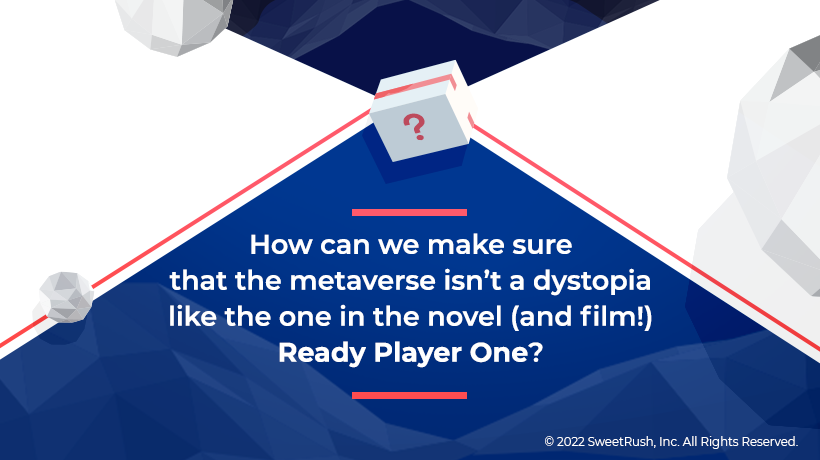From hardware to polygons, getting started with immersive technology can feel like a plunge into the unknown. But SweetRush’s award-winning XR Team is on a mission to help L&D practitioners understand these exciting new technologies and their use cases. Level-setting on all things XR is a major part of the team’s consultative approach to immersive learning.
The question below comes to us from a SweetRush community member who attended our webinar, “To the Metaverse and Beyond: An Immersive Learning Adventure for L&D Leaders and Professionals.”
 How can we make sure the metaverse isn’t a dystopia like the one in the novel (and film!) Ready Player One?
How can we make sure the metaverse isn’t a dystopia like the one in the novel (and film!) Ready Player One?
Emily Dale, Design Strategy and Learning Architect, responds:
Meta, AI, and most technology, in general, are aimed at creating “efficiencies”—tools to speed up progress, save time or energy, or accomplish a task more quickly (horse-drawn carriages to cars, brooms to vacuum cleaners, the encyclopedia to Alexa, providing instantaneous information).
Similarly, the metaverse offers immersive and instantaneous ways to connect with friends, learn a new skill, shop in a store, or see a concert—all without leaving your home. A question to ask today might be: Are there “inefficient” experiences we want to protect in the name of in-person interactions or meaningful engagement with our communities, cultures, and local businesses? If we decentralize everything (classrooms, banks, medical appointments, and musical performances) to the point where every experience is virtual, has no real location, or involves any sort of in-person communication (eye contact, handshakes, etc.), are we then in a dystopia?
Two ways to prevent a dystopic metaverse are:
1) Ask yourself if an experience should be virtualized and to what extent. If an in-person learning experience, for instance, plays an important role in building community or culture, or allows the learner to do important things they won’t be able to do in VR (e.g., interact with a real workplace/equipment, look other learners or stakeholders in the eyes, etc.), then maybe bringing that experience into the metaverse is not as good an idea as it sounds. Or maybe certain tasks or interactions should be brought into the metaverse and others shouldn’t.
2) Research and consider what positive experiences and interactions are possible in the metaverse that are not possible in reality. For example, enjoying a virtual concert with a faraway friend, using a digital twin to experiment with a risky design, visiting the Great Pyramid of Giza, or engaging a public official in the same virtual room. These experiences are not dystopic but exciting, meaningful, and promotive of a healthy future.
Want to learn more about XR technology, needs analysis, and L&D use cases for immersive learning in the metaverse and beyond? Check out our eBook, “Ready, Learner One? The L&D Innovator’s Gateway To Immersive Learning and the Metaverse.”




